Komentáře / Otázky (34)
![]() Jaana napsala:
Jaana napsala:
En fråga om det bildas ett hål vid var sida om hälen som jag får montera/sy ihop senare då jag lägger upp? /stickar upp?nya maskor:"Efter hälminskn stickas det upp (8-9-10) 10-11-12 (13-13-13) m på varje sida av hälen och de (18-22-22) 22-24-24 (24-28-28) m från tråden sätts tillbaka på st = (44-50-52) 52-56-58 (64-68-68) m" Alltså vad betyder stickas upp?
26.11.2024 - 19:19Odpověď DROPS Design :
Hej Jaana. I denna video ser du hur du kan plocka upp/sticka upp maskor på en socka. Hoppas den är till hjälp! Mvh DROPS Design
27.11.2024 - 13:15
![]() Sónia Santos napsala:
Sónia Santos napsala:
Olá, estou a fazer as meias Miss Foxy. Já tricotei o canelado e estou a começar o calcanhar. A minha dúvida é aqui: Work next round as follows: K the first 38 sts and dec 10 sts evenly over these sts = 28 sts K, slip these sts on 1 stitch holder (= mid on top of foot). Entao, tenho de diminuir 10 malhas (estou a trabalhar com o tamanho maior). Essas diminuições são depois de tricotar as 38 malhas em meias ou é logo quando começo esta carreira? Obrigada
18.10.2024 - 15:11Odpověď DROPS Design :
Bom dia, Deverá fazer as diminuições incorporadas nas primeiras 38 malhas. Daí ficarem 28 malhas, tal como é indicado. Bons tricôs!
22.10.2024 - 13:14
![]() Annie JAVOY napsala:
Annie JAVOY napsala:
Bonjour, pour la réalisation des moufles peux t on utiliser une aiguille circulaire plutôt que des aiguilles double pointe .?merci
06.07.2024 - 10:56Odpověď DROPS Design :
Bonjour Annie, c'est bien possible avec magic loop. Bon travail!
12.07.2024 - 14:35
![]() Nathalie Poulin napsala:
Nathalie Poulin napsala:
Bonjour, Je suis propriétaire d’une boutique de tricot qui vend vos très belles laines Drops. Je me questionne, car vous faites un patron de bas avec la laine Drops Alpaca qui contient 100% alpaca. Normalement, il faut du nylon pour la résistance…Est-ce que je dois conseiller cette laine quand même? Nathalie Poulin de Créations L’artis-Anna
07.12.2023 - 17:19Odpověď DROPS Design :
Bonjour Mme Poulin, ce modèle a été créé en DROPS Alpaca, mais naturellement, si vous voulez plus de résistance, vous pourrez le tricoter en DROPS Fabel (Superwash) ou DROPS Nord (mélange alpaga, laine et polyamide). Bon tricot!
08.12.2023 - 08:49
![]() Lara napsala:
Lara napsala:
Buonasera, cosa si intende per "mettere il segnapunti con 21 maglie sopra e sotto la muffola"? Ai lati? Grazie
20.10.2023 - 18:36Odpověď DROPS Design :
Buonasera Lara, esatto, ci devono essere 21 maglie per il sopra e 21 maglie per il sotto della muffola. Buon lavoro!
24.10.2023 - 22:36
![]() Lucille Pineault napsala:
Lucille Pineault napsala:
Je ne comprends pas quand vous dites aprèsA1, un marqueur de chaque côté! Chaque côté de quoi ? Où? Merci
16.10.2023 - 20:39Odpověď DROPS Design :
Bonjour Mme Pineault, on va placer 1 marqueur pour délimiter les côtés de la moufle, placez la maille avec la flèche dans A.1 au milieu du dos de la main et comptez ainsi 12-15 (18-21-24) mailles pour le dos de la main et pour la paume, en veillant à ce que la maille indiquée reste bien au milieu du dos de la main. Bon tricot!
17.10.2023 - 09:58
![]() Gina Clegg napsala:
Gina Clegg napsala:
Is there any way possible these mittens could be knitted flat on straight needles? I really cannot get to grips with dpns. 🥴
23.03.2023 - 12:35Odpověď DROPS Design :
Dear Mrs Clegg, this might be possible, but it might be also easier in the round, what about magic loop, did you try? It might be easier than dpn?
23.03.2023 - 12:48
![]() Rike napsala:
Rike napsala:
Bitte um Hilfe zu den Fäustlingen: Welche Zahl muss ich denn jetzt wählen, wenn ich für 24 Monate stricken will? 0/6-12/24 Monate (3/5-6/9-10/14) Jahre stimmt doch nicht mit 36-40 (44-52-56) M überein. Zwei Größen fehlen! Welche entspricht denn welcher ? Danke
17.09.2022 - 20:18Odpověď DROPS Design :
Liebe Frau Rike, diese Fäustlingen sind nur in 5 Größen erhältlich; für 24 Monaten folgen Sie die 2. Größe: 12/24 Monaten. Beachten Sie, daß Ihre Maschenprobe stimmt (26 M x 34 Reihen glattrechts = 10 x 10 cm). Viel Spaß beim stricken!
19.09.2022 - 09:55
![]() Marieluise napsala:
Marieluise napsala:
Hallo! Ich kann das Diagramm für das Muster in der Anleitung finden. Wo finde ich das Diagramm?
11.10.2021 - 10:16Odpověď DROPS Design :
Liebe Marieluise, Manchmal haben wir derzeit Probleme mit der Anzeige der Bilder. Versuchen Sie, die Seite zu aktualisieren und den Browser-Cache zu leeren. Wenn die Fotos erneut auf der Website angezeigt werden, können Sie die Anleitung ausdrucken. Viel Spaß beim Stricken!
11.10.2021 - 11:28
![]() Baert napsala:
Baert napsala:
Modèle en français
09.10.2021 - 10:47
Miss Fox |
|||||||
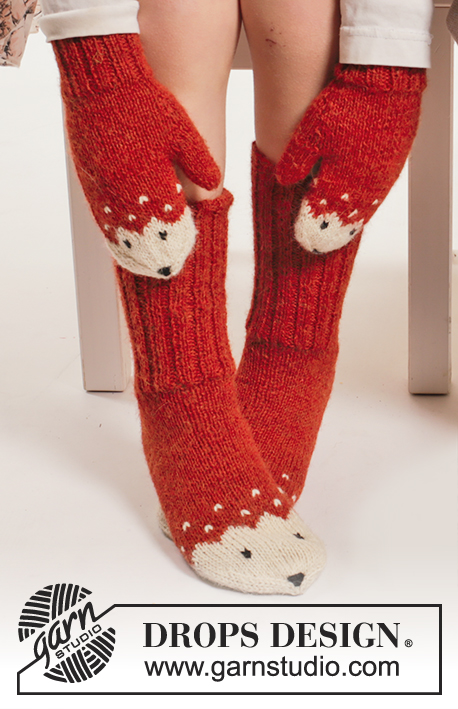 |
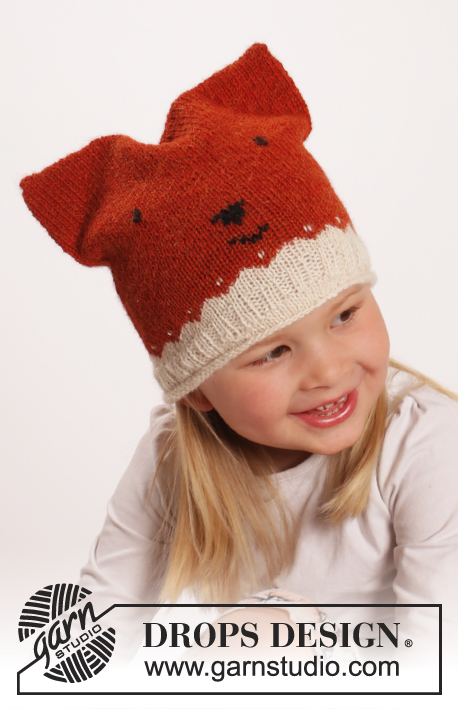 |
||||||
DROPS souprava: rukavice – palčáky, čepice a ponožky s liščím vzorem pletené z příze "Alpaca". Velikost: 0 měsíců – 14 let.
DROPS Extra 0-1217 |
|||||||
|
TIP - PŘIDÁVÁNÍ: Přidáváme nahozením; v následující kruhové řadě pleteme nahození hladce za zadní nit, aby se v pletenině netvořily dírky. VZOR: Viz schémata A.1 a A.2; celý vzor pleteme lícovým žerzejem. TIP - UJÍMÁNÍ: Pleteme po poslední 3 oka před značkou – pak spleteme 2 oka hladce, 2 oka upleteme hladce (značka leží mezi nimi), 1 oko sejmeme hladce, 1 upleteme hladce a sejmuté přes ně přetáhneme. TVAROVÁNÍ PATY: 1. řada (= lícová): pleteme hladce po posledních (5-5-7) 7-7-7 (7-7-7) ok v řadě, následující oko sejmeme hladce, 1 oko upleteme hladce a sejmuté přes ně přetáhneme, práci otočíme. 2. řada (= rubová): pleteme obrace po posledních (5-5-7) 7-7-7 (7-7-7) ok v řadě, následující oko sejmeme obrace, 1 oko upleteme obrace a sejmuté přes ně přetáhneme, práci otočíme. 3. řada (= lícová): pleteme hladce po posledních (4-4-6) 6-6-6 (6-6-6) ok v řadě, následující oko sejmeme hladce, 1 oko upleteme hladce a sejmuté přes ně přetáhneme, práci otočíme. 4. řada (= rubová): pleteme obrace po posledních (4-4-6) 6-6-6 (6-6-6) ok v řadě, následující oko sejmeme obrace, 1 oko upleteme obrace a sejmuté přes ně přetáhneme, práci otočíme. Tímto způsobem pokračujeme v ujímání (vždy o 1 oko snížíme počet ok zbylých v řadě) dokud nám na jehlicích nezůstane (10-10-10) 10-10-10 (14-14-14) ok. -------------------------------------------------------- RUKAVICE - PALČÁKY: Pleteme v kruhových řadách na ponožkových jehlicích. Na ponožkové jehlice č.2,5 nahodíme rezavou přízí 36-40 (44-52-56) ok a pleteme pružným vzorem 2/2 (= střídáme 2 oka hladce, 2 oka obrace) do výše 5-6 (7-8-9) cm. Pak pleteme 1 kruhovou řadu hladce a SOUČASNĚ ujmeme rovnoměrně 12-10 (8-10-8) ok = 24-30 (36-42-48) ok. Upleteme 1 cm výšky lícovým žerzejem. V následující kruhové řadě začneme tvarovat klín pro palec – přidáme 1 oko na každé straně 2. oka v kruhové řadě – viz TIP - PŘIDÁVÁNÍ (= přidali jsme 2 oka). Toto přidávání opakujeme v každé 3. kruhové řadě, celkem 3-4 (5-6-7)x = 7-9 (11-13-15) ok palce. Ve výši 8,5-10 (11,5-13-14,5) cm odložíme 7-9 (11-13-15) ok palce na pomocnou jehlici. Za těmito odloženými oky nahodíme 1 oko nové = na jehlicích máme 24-30 (36-42-48) ok. Pokračujeme lícovým žerzejem v kruhových řadách. Ve výši 10-13 (14-15-17) cm pleteme vzor A.1 – POZN.: oko, které je ve schématu označené šipkou, by mělo ležet přibližně uprostřed horní strany (hřbetu) rukavice. Po dokončení celé sekvence vzoru A.1 (na výšku) pleteme smetanovou přízí až do ukončení práce. Ve výši 13-16 (17-19-21) cm vložíme na každou stranu rukavice 1 značku (= mezi značkami leží 12-15 (18-21-24) ok horní strany, hřbetu rukavice a stejný počet ok dlaně). V následující kruhové řadě ujmeme 1 oko na každé straně obou značek – viz TIP - UJÍMÁNÍ (= 4 oka jsme ujmuli). Toto ujímání opakujeme v každé 2. kruhové řadě, celkem 2-2 (1-3-2)x a poté ujmeme ještě v každé kruhové řadě, celkem 2-2 (4-4-6)x = na jehlicích zbývá 8-14 (16-14-16) ok. V následující kruhové řadě spleteme každá 2 oka hladce. Přízi odstřihneme, protáhneme zbylými oky, utáhneme a zapošijeme. Celá rukavice měří asi 15-18 (19-22-24) cm. PALEC: Odložených 7-9 (11-13-15) ok palce vrátíme na ponožkové jehlice č. 2,5 a navíc nabereme 5 ok z okraje za nimi = 12-14 (16-18-20) ok. Pleteme lícovým žerzejem v kruhových řadách do výše asi 2,5-3 (3,5-4-5) cm; v následující kruhové řadě spleteme každá 2 oka hladce = 6-7 (8-9-10) ok. Přízi odstřihneme, protáhneme zbylými oky, stáhneme a zapošijeme. Černou přízí vyšijeme oči a tlamičku – viz foto. Druhou rukavici pleteme stejně, jen zrcadlově převrácenou, tj. pro palec přidáváme na každé straně předposledního oka v kruhové řadě (namísto 2. oka). ---------------------------------------------------------- ČEPICE: Pleteme v kruhových řadách na ponožkových jehlicích/kruhové jehlici. Na ponožkové jehlice/kruhovou jehlici č.3 nahodíme smetanovou přízí 84-96 (104-108-112) ok a upleteme 6 kruhových řad lícovým žerzejem. Pak pleteme 6 kruhových řad pružným vzorem 2/2 (= střídáme 2 oka hladce, 2 obrace). Po dokončení pružného vzoru pleteme v kruhových řadách lícovým žerzejem vzor dle schématu A.2. Po dokončení 1 celé sekvence vzoru A.2 (na výšku) pokračujeme lícovým žerzejem rezavou přízí. Ve výši 17-19 (21-22-23) cm všechna oka volně uzavřeme. DOKONČENÍ: Sešijeme horní hranu čepice – nejlépe pletacím stehem. Černou přízí vyšijeme oči, čumáček a tlamičku – viz foto. ---------------------------------------------------------- PONOŽKA: Pleteme v kruhových řadách na ponožkových jehlicích. Na ponožkové jehlice č.2,5 nahodíme rezavou přízí (44-48-52) 52-56-56 (60-64-64) ok a pleteme pružným vzorem 2/2 (= střídáme 2 oka hladce, 2 oka obrace) do výše (8-10-10) 12-14-14 (16-18-18) cm. Následující kruhovou řadu pleteme takto: prvních (26-30-30) 30-34-34 (34-38-38) ok upleteme hladce a SOUČASNĚ nad nimi ujmeme rovnoměrně (8-8-8) 8-10-10 (10-10-10) ok = zůstane (18-22-22) 22-24-24 (24-28-28) ok hladce; tato oka odložíme na pomocnou jehlici (= nárt). Na jehlici nám zůstalo (18-18-22) 22-22-22 (26-26-26) ok = pata. Nad oky paty upleteme v řadách pružným vzorem jako dříve (3-3,5-4) 4-4,5-4,5 (5-5-5) cm výšky. Do pleteniny vložíme značku. Teď TVARUJEME PATU - viz výše. Po dokončení tvarování nabereme po obou stranách paty (8-9-10) 10-11-12 (13-13-13) ok a odložených (18-22-22) 22-24-24 (24-28-28) ok vrátíme z pomocné jehlice zpět na jehlici = (44-50-52) 52-56-58 (64-68-68) ok. Na každou stranu nártu (= 18-22-22) 22-24-24 (24-28-28) ok) umístíme značku. Pokračujeme lícovým žerzejem v kruhových řadách a SOUČASNĚ ujímáme na obou stranách takto: poslední 2 oka PŘED (18-22-22) 22-24-24 (24-28-28) oky nártu spleteme hladce za zadní nit, první 2 oka ZA (18-22-22) 22-24-24 (24-28-28) oky nártu spleteme hladce. Toto ujímání opakujeme v každé 2. kruhové řadě celkem (4-4-5) 5-7-5 (8-7-7)x = (36-42-42) 42-42-48 (48-54-54) ok. Pleteme do výše (4-5-5) 6-8-9 (10-12-13) cm (= do ukončení práce zbývá doplést asi (6-6-7) 7-7-8 (8-8-9) cm výšky). Nyní pleteme v kruhových řadách vzor A.1 – POZN.: oko, které je ve schématu označené šipkou, by mělo ležet přibližně uprostřed horní strany, nártu. Po dokončení celé sekvence vzoru A.1 (na výšku) pleteme smetanovou přízí až do ukončení práce. Ve výši (7-8-9) 9-11-13 (14-16-18) cm od značky na patě (= do ukončení práce zbývá doplést asi (3-3-3) 4-4-4 (4-4-4) cm) vložíme na obou stranách novou značku tak, abychom na svrchní části (nártu) i na spodní části (šlapce) ponožky měli (18-21-21) 21-21-24 (24-27-27) ok. V následující kruhové řadě začneme tvarovat špičku - ujímáme 1 oko na obou stranách obou značek – viz TIP - UJÍMÁNÍ (= ujmeme 4 oka). Ujímání opakujeme v každé 2. kruhové řadě celkem (5-4-4) 7-6-5 (5-5-5)x, pak ještě v každé kruhové řadě celkem (1-3-3) 0-1-4 (4-5-5)x = na jehlicích zbývá (12-14-14) 14-14-12 (12-14-14) ok. V následující kruhové řadě spleteme každá 2 oka hladce. Přízi odstřihneme, protáhneme zbylými oky, stáhneme a zapošijeme. Černou přízí vyšijeme na špičku ponožky oči a čumáček - viz foto. Stejným způsobem upleteme i druhou ponožku. |
|||||||
Vysvětlivky ke schématu |
|||||||
|
|||||||
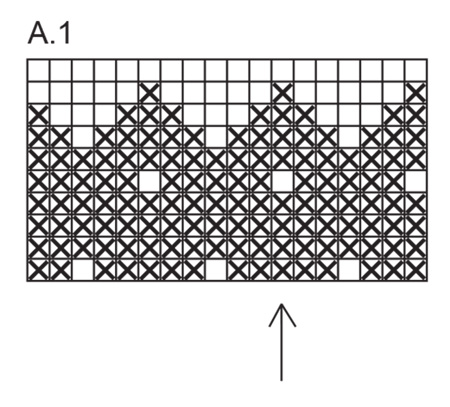
|
|||||||
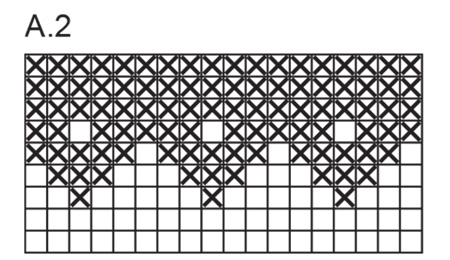
|
|||||||
Dokončili jste tento model?Pak označte své fotky tagem #dropspattern nebo je pošlete do galerie #dropsfan. Potřebujete s tímto návodem poradit?Otevřete-li si návod na stránce garnstudio.com, najdete tam 21 výukových video-ukázek, Komentáře/Dotazy a další užitečné informace. © 1982-2025 DROPS Design A/S. Vyhrazujeme si veškerá práva. Tento dokument, včetně všech jeho dílčích částí, podléhá autorským právům. Podrobnější komentář k možnostem užití našich návodů najdete dole pod každým návodem na našich stránkách. |
|||||||







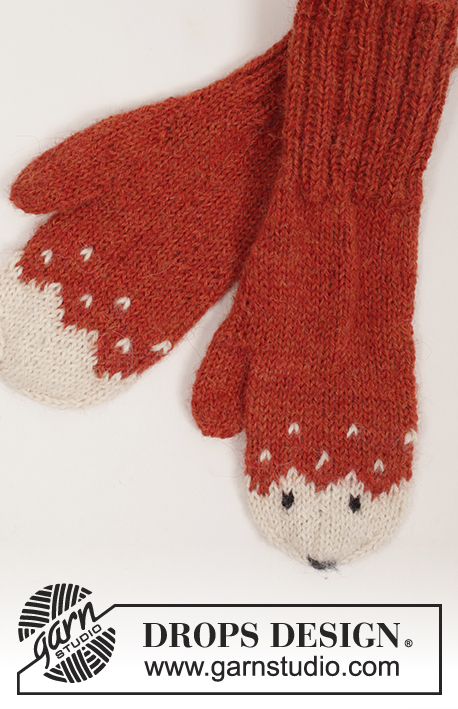
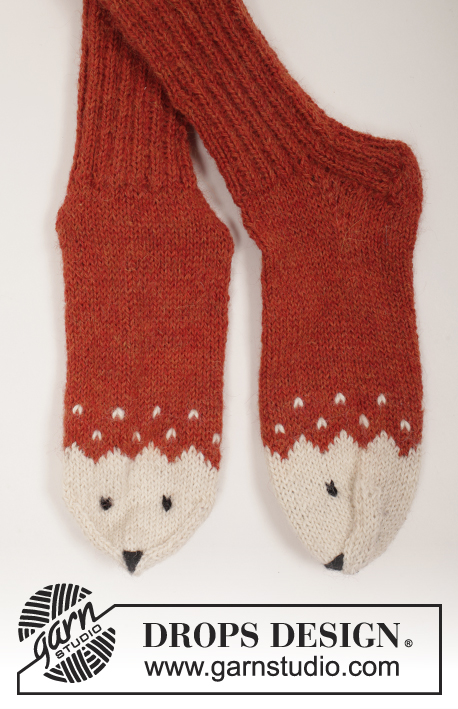
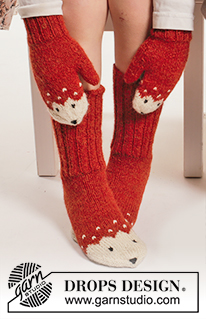
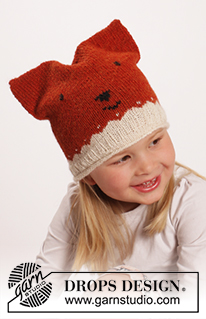
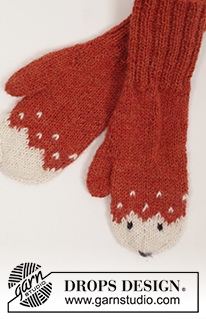
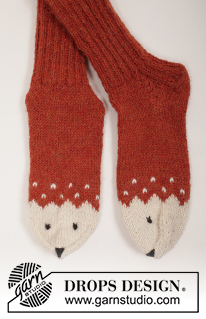








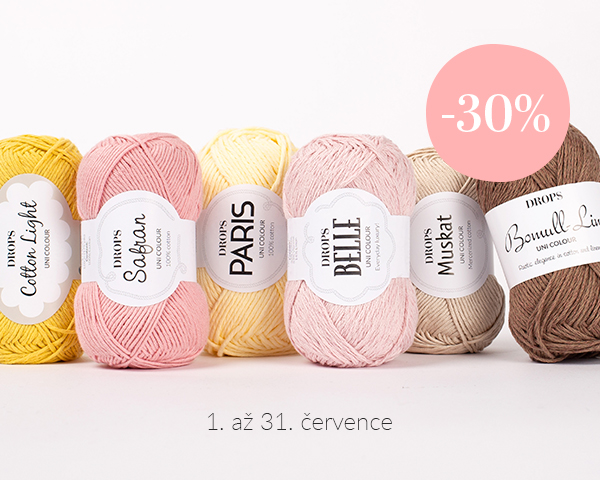
































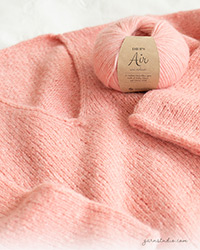


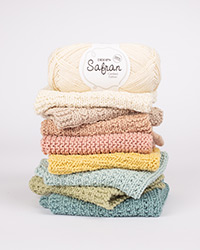
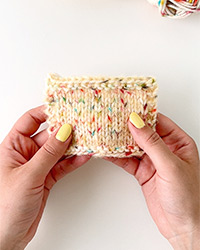
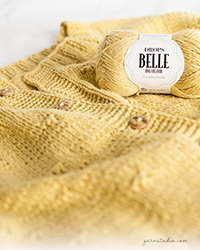
Přidejte komentář k návodu DROPS Extra 0-1217
Rádi bychom věděli, co si o tomto modelu myslíte!
Pokud se chcete na něco zeptat, dbejte prosím na to, abyste ve formuláři níže vybrali správnou kategorii - díky tomu se dříve dozvíte, co potřebujete vědět. Povinná pole jsou označena *.